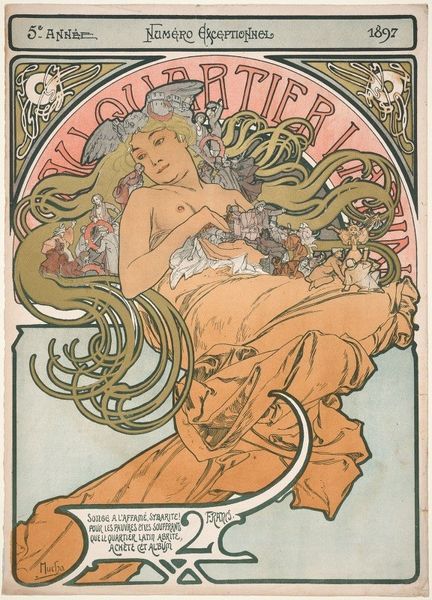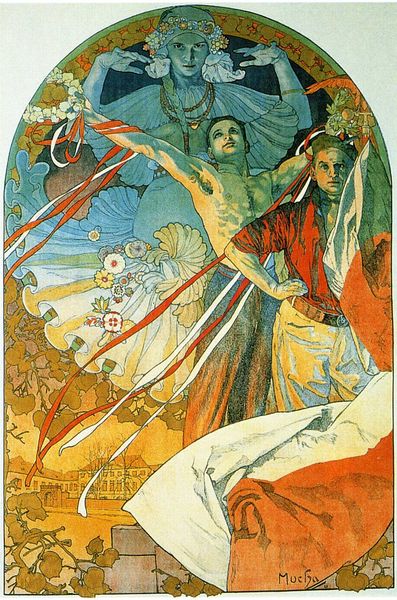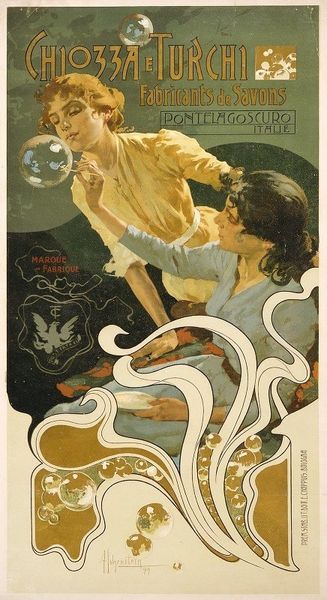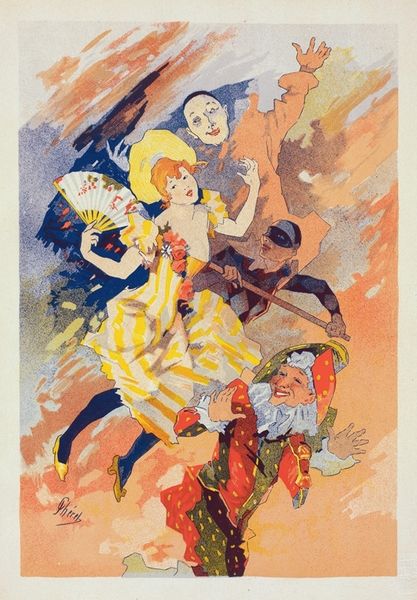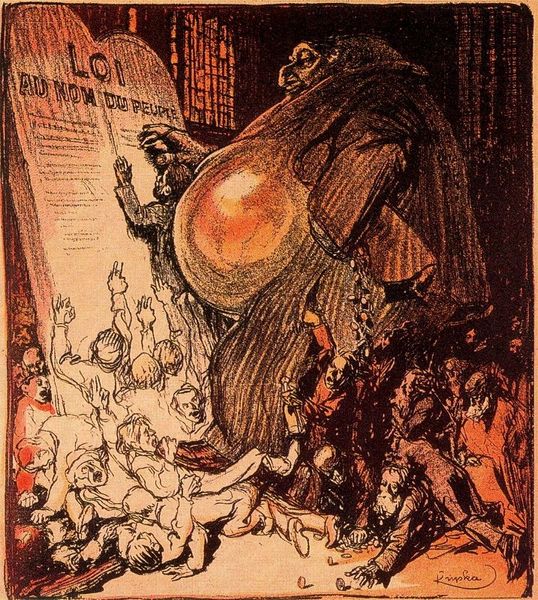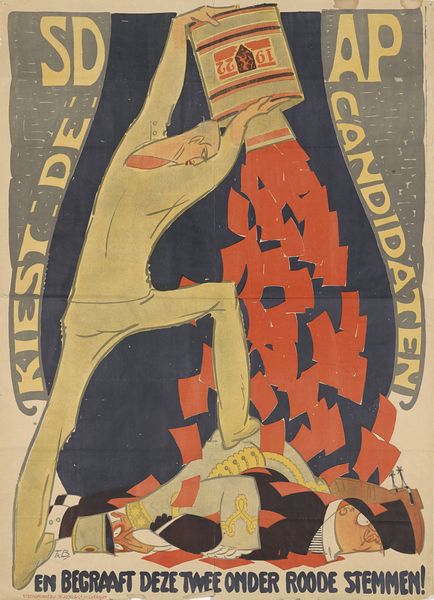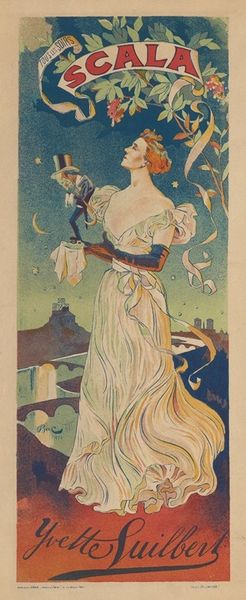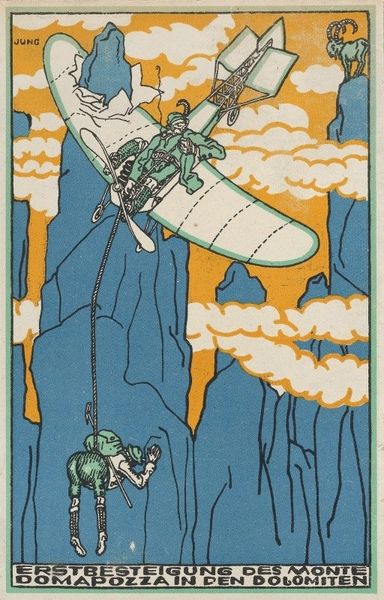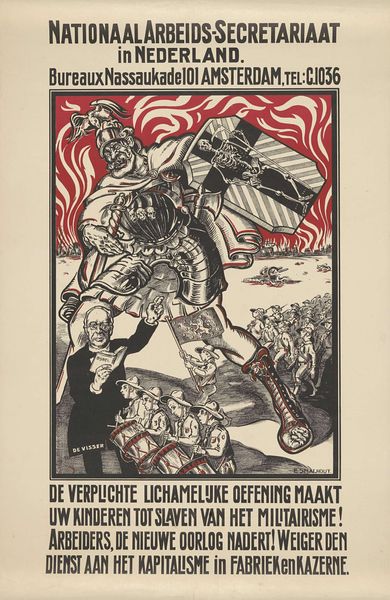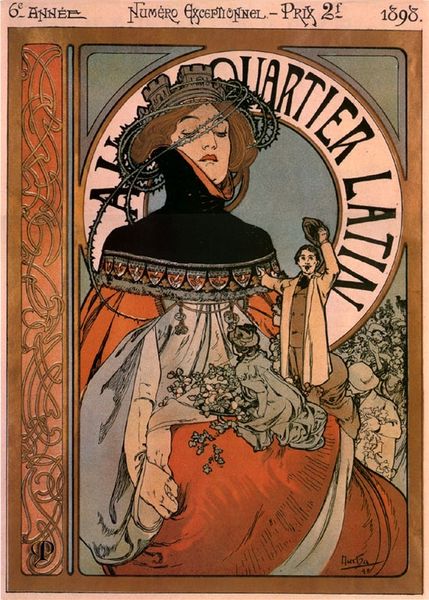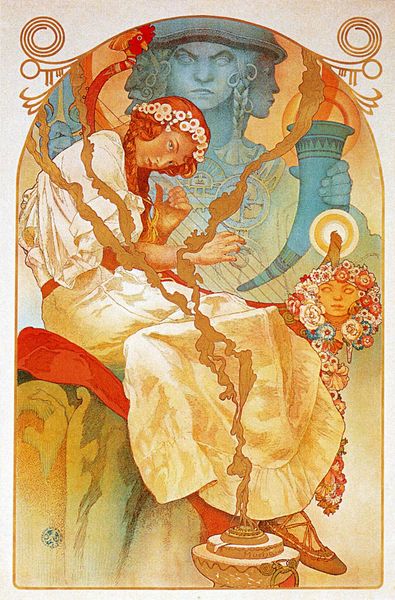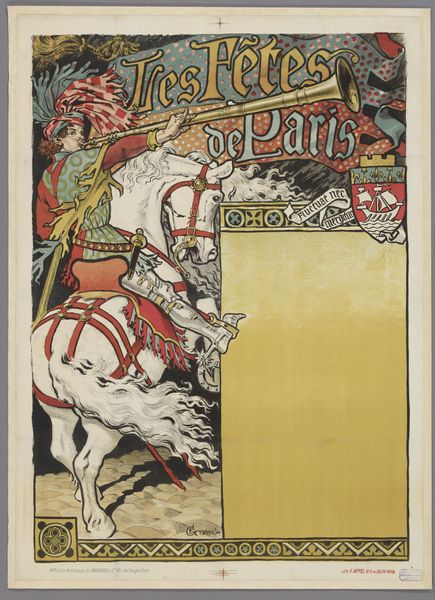
Copyright: Public Domain: Artvee
Curator: Looking at this piece, one immediately notices the Art Nouveau styling signature to Alphonse Mucha. Dating to 1926, this poster heralds The Sokol Festival in Prague. Editor: There’s such a striking combination of strength and fragility in this print. The central figures seem poised and heroic, yet the wispy lines and pastel tones give a dreamlike quality. Curator: The Sokol movement itself, a gymnastics organization, became a symbol of pan-Slavic identity and resistance against Austro-Hungarian rule, later evolving into a key player in Czechoslovakian nationalism. So, the confident poses feel appropriate. Editor: Absolutely, you can see how this piece acted as a unifier, celebrating shared Slavic culture in the face of both internal and external pressures. How it intersects performative physicality with national identity. Curator: What's particularly fascinating is how Mucha uses symbolism and allegorical figures to evoke the spirit of the movement. Consider the female figure towering in the background, seeming to oversee the participants below. Editor: It’s definitely a potent image that invites analysis through contemporary theory. The romantic style of dress and figure could perhaps be interpreted today as outdated gender portrayals. How can we critique these traditional aesthetics while understanding their role in galvanizing the group? Curator: Indeed, Mucha was aiming for popular appeal and unity, rather than deconstruction. Editor: Well, this exploration has certainly helped bring this vivid piece of art into a modern discourse of understanding how identity and aesthetics interact. Curator: And in that sense, Alphonse Mucha and his contemporaries offered enduring visual languages.
Comments
No comments
Be the first to comment and join the conversation on the ultimate creative platform.
